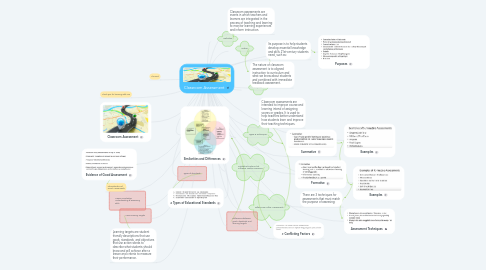Classroom Assessment
Latese Jamisonにより

1. Uses Learning Targets
2. Similarities and Differences
3. Types of Standards
4. 4 Types of Educational Standards
5. Assess Knowledge, Understanding & Reasoning Skills
6. Learning targets are student friendly descriptions that use goals, standards, and objectives that use action words to describe what students should know and will achieve after a lesson and criteria to measure their performance.
7. Evidence of Good Assessment
8. Characteristics of Good Assessments
9. The End
10. Classroom Assessment
11. Thank you for learning with me!
12. Definition
13. Differs From Other Assessments
14. Purpose
15. Nature
16. Contextual Factors That Influence Teacher Decisions
17. Differences between goals, standards, and learning targets
18. Types & Techniques
19. Classroom assessments are events in which teachers and learners are integrated in the process of teaching and learning to monitor learning experiences and inform instruction.
20. The nature of classroom assessment is to aligned instruction to curriculum and what we know about students and combined with immediate feedback assessment.
21. Its purpose is to help students develop essential knowledge and skills 21st-century students need, such as:
22. Classroom assessments are intended to improve course and learning intend of assigning scores or grades. It is used to help teachers better understand how students learn and improve their teaching techniques.
23. Summative
24. 2 Conflicting Factors
25. Purposes
26. Examples
27. Formative
28. Examples
29. There are 3 techniques for assessments that must match the purpose of assessing:
30. Assessment Techniques


